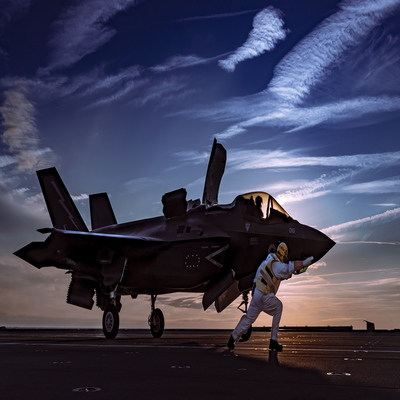The aim of this course is to provide you with the capability to conduct a computer aided engineering design procedure in aeronautics for computational fluid dynamics modelling.
The course will provide a introduction to Computer Aided Engineering (CAE) software using Solidworks, Catia v5 and Rhinoceros and assumes prior knowledge in basic CAE procedures and aerodynamic theory.
At a glance
-
- Dates
-
- Please enquire for course dates
- Duration5 days
- LocationCranfield University at Shrivenham
-
Cost£2,100
What you will learn
On successful completion of the course you will be able to:
- Explain and quantify the requirements for CAE industrial approach to engineering problems.
- Describe the methods and difficulties to simulate different flow conditions.
- Explain the concept of numerical solution and turbulence modelling.
- Quantify the performance characteristics attainable from different turbulence models.
- Describe the techniques for mesh preparation and simulation procedures.
- Use concepts residual, convergence, stability to assess simulation efficiency.
- Use concepts of streamlines, surface colouring and iso-surfaces to visualise the results of the simulation.
- Identify key parameters to set-up an automatic CAE procedure to optimise aircraft geometry.
Core content
CAD Introduction: introduction to computed aided design (CAD) software (SolidWorks, CatiaV5, Rhinoceros). Introduction to the graphic user interface (GUI), software structure and basic geometries construction.
CAD Advanced Procedures: introduction to advanced geometry design, mathematical constrains and model parameterisation.
CFD Introduction: introduction to computational fluid dynamics. Definition of the basic Navier-Stokes equations and their discretization for numerical solutions. Identification of the “closure problem” and turbulence theory. Introduction to the mesh concept and finite element analysis.
Introduction to turbulence modelling: introduction to turbulence theory and its effects in aerodynamics and the complexity of the equation numerical solution. Turbulence models strength and weaknesses.
CFD solution strategy: Derivation of the optimal approach to aerodynamic problem solving. Definition of the optimal CFD approach in exact and subsequent mesh requirements. Selection of appropriate solver (density-based/pressure-based) and numerical scheme. Convergence issues. Selection of proper flow modelling assumption and boundary conditions.
Results Analysis: Introduction to CFD post-processing techniques for flow visualisation and data extraction from the simulation.
CAE Automatic Loop: Introduction to automatic CAE-loop for geometry analysis and optimisation. Identification of the driving parameters and selection of the algorithm for configurations population analysis.
Case Study Workshop: Compulsory group learning exercise using case study, including presentation by course attendants of a solution to a problem assigned to each group.
Who should attend
This course is suitable for engineers who require to further develop their basic knowledge of aerodynamics and CAE procedures.
Location and travel
Cranfield Defence and Security (CDS) is a Cranfield School based at the Ministry of Defence establishment on the Oxfordshire/Wiltshire borders.
Shrivenham itself lies in the picturesque Vale of the White Horse, close to the M4 motorway which links London and South Wales. It is 7 miles from Swindon, the nearest town, which lies off the M4 at the hub of Britain’s motorway network. Bath, Cheltenham, Bristol and Oxford are all within an hour’s drive and London less than two hours away by car.
All visitors must be pre-booked in at reception by the person they are visiting on the campus. For further location and travel details
How to apply
To apply for this course please use the online application form.
Read our Professional development (CPD) booking conditions.
